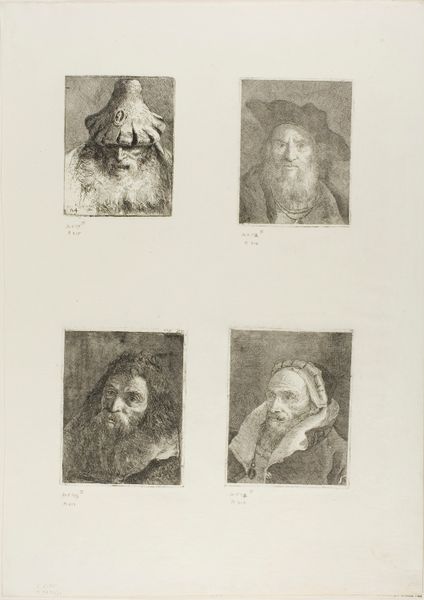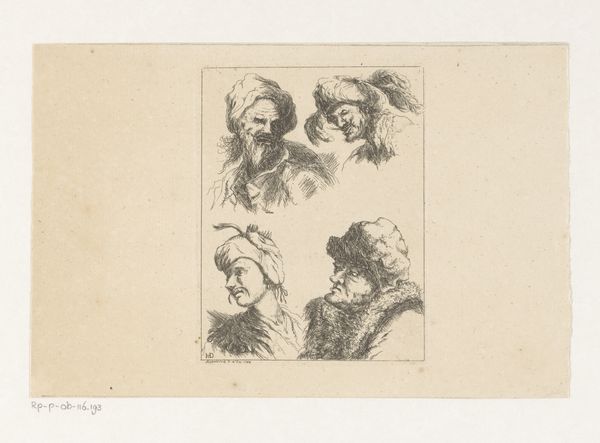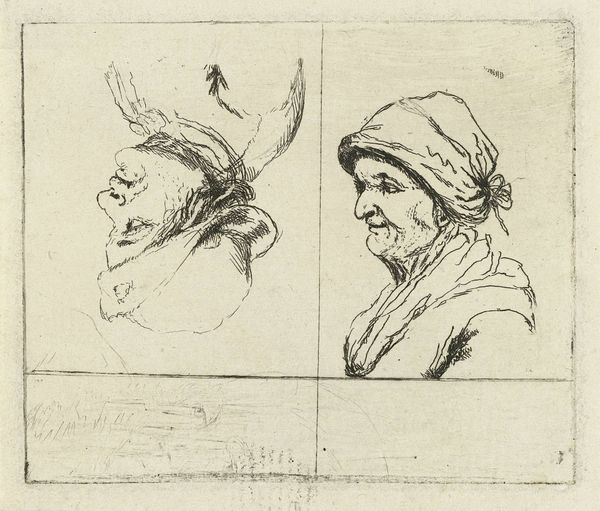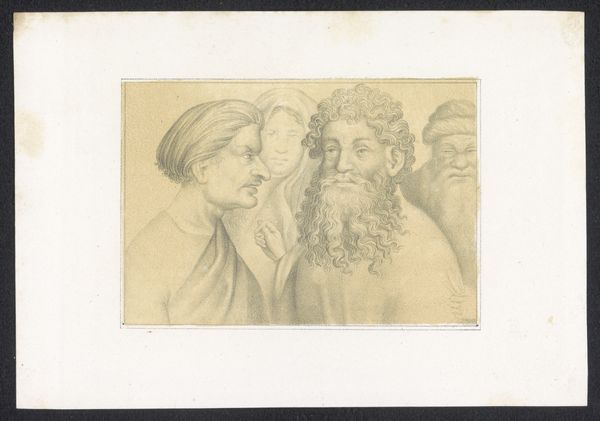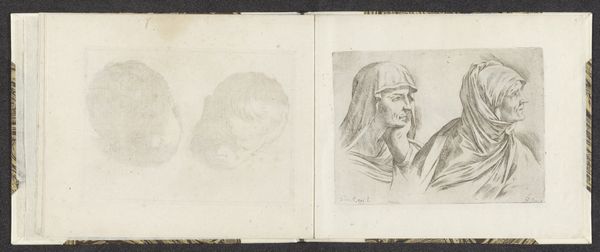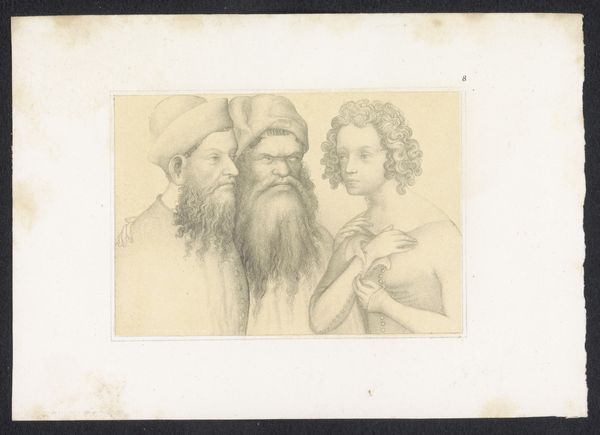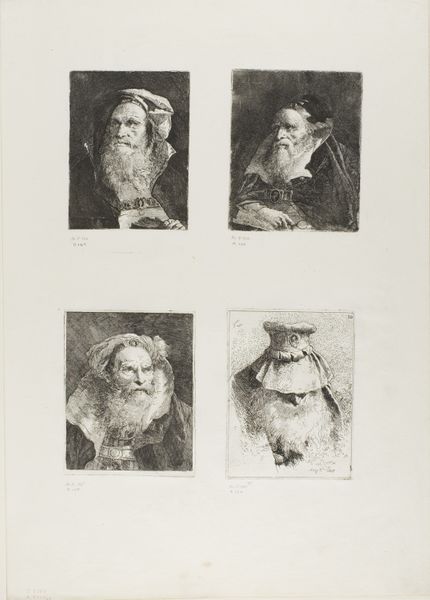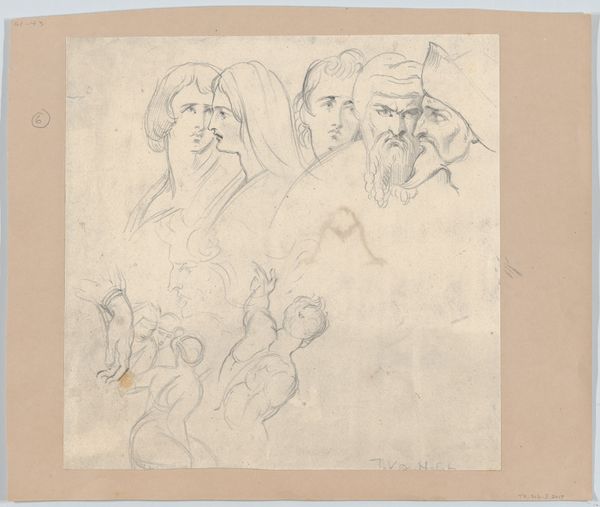
print, engraving
#
baroque
# print
#
charcoal drawing
#
genre-painting
#
engraving
Dimensions: height 85 mm, width 70 mm, height 83 mm, width 70 mm, height 205 mm, width 253 mm
Copyright: Rijks Museum: Open Domain
Editor: Here we have "Tronies van een oude man en een oude vrouw", or "Studies of an old man and an old woman", a 1678 print. It's unassuming, just two portrait studies side by side. I can't help but wonder about the story behind it. What do you see in this piece? Curator: It’s interesting how these “tronies,” aren’t quite portraits. They're studies of character, of types, not necessarily aiming to capture a specific individual’s likeness. Considering the historical context, these could be seen as a reflection on societal views of aging, gender, and class. Editor: That makes sense, I didn't really think about the individuals depicted more like representations, in this case how the older generation and gender were perceived. Can you elaborate on the significance of that perspective? Curator: Consider the power dynamics at play. The man, with his long hair and beard, almost embodies a wizened philosopher figure; there’s an implication of authority derived from experience. In contrast, the woman, with her head covering, appears more modest and contained, reinforcing prevailing gender roles. These visual tropes aren’t neutral, but carry cultural weight. Do you think the artist is challenging or reinforcing those stereotypes? Editor: It’s hard to say. I wonder, does the choice of printmaking—a medium that allows for reproduction and wider dissemination—influence how we should interpret this piece in terms of social commentary? Curator: Precisely. Printmaking democratizes the image, making it accessible to a broader audience. The artist's choice implicates questions of representation, visibility, and who gets to control the narrative around identity. These aren't just character studies; they’re statements, however subtle, about social structure. Editor: I hadn't thought about that! Now it’s not just a study of old age, it is also a powerful commentary on how we viewed people. Thank you for highlighting that the cultural implications extend far beyond a snapshot in time. Curator: It's vital we question the stories art tells and whose perspectives they reflect. Only by considering the social context, can we unravel its potential influence on culture, representation, and power.
Comments
No comments
Be the first to comment and join the conversation on the ultimate creative platform.
